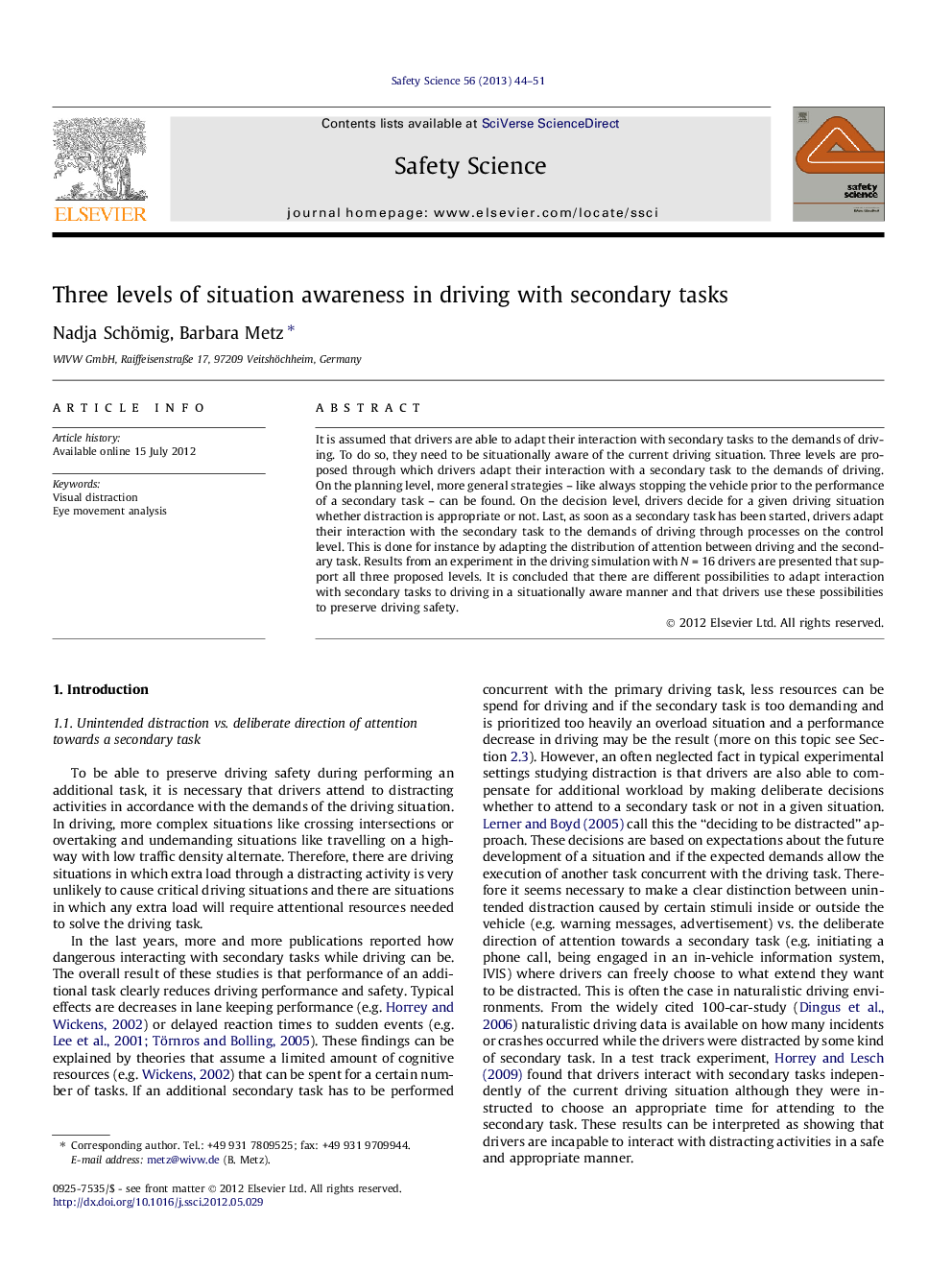| Article ID | Journal | Published Year | Pages | File Type |
|---|---|---|---|---|
| 589265 | Safety Science | 2013 | 8 Pages |
It is assumed that drivers are able to adapt their interaction with secondary tasks to the demands of driving. To do so, they need to be situationally aware of the current driving situation. Three levels are proposed through which drivers adapt their interaction with a secondary task to the demands of driving. On the planning level, more general strategies – like always stopping the vehicle prior to the performance of a secondary task – can be found. On the decision level, drivers decide for a given driving situation whether distraction is appropriate or not. Last, as soon as a secondary task has been started, drivers adapt their interaction with the secondary task to the demands of driving through processes on the control level. This is done for instance by adapting the distribution of attention between driving and the secondary task. Results from an experiment in the driving simulation with N = 16 drivers are presented that support all three proposed levels. It is concluded that there are different possibilities to adapt interaction with secondary tasks to driving in a situationally aware manner and that drivers use these possibilities to preserve driving safety.
► Drivers interact with secondary tasks in a situationally aware manner. ► Planning level: opinion regarding distracted driving influences secondary task interaction. ► Decision level: secondary tasks are started in appropriate situations. ► Control level: execution of secondary task is adapted to driving demands. ► Results of driving simulator experiment find support for all three levels.
